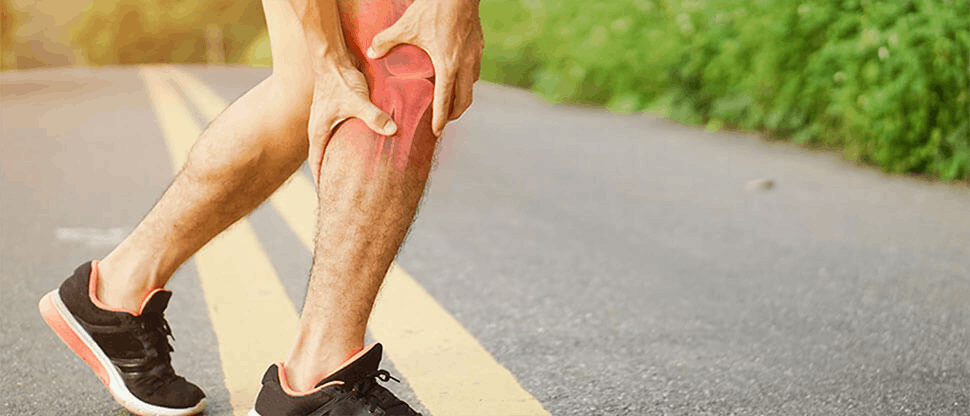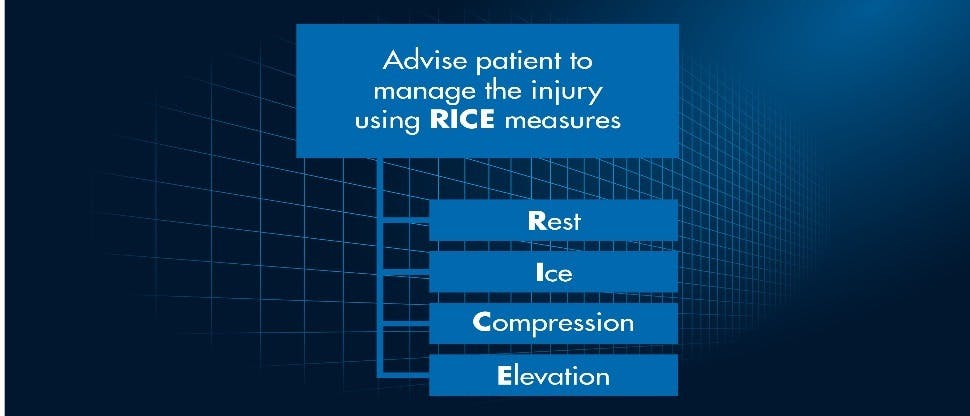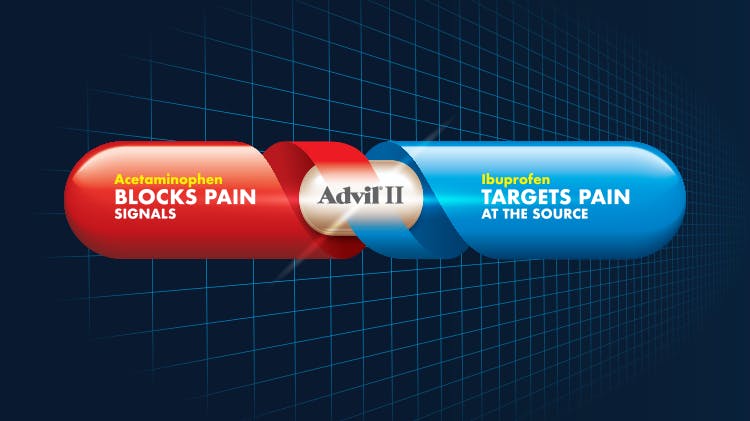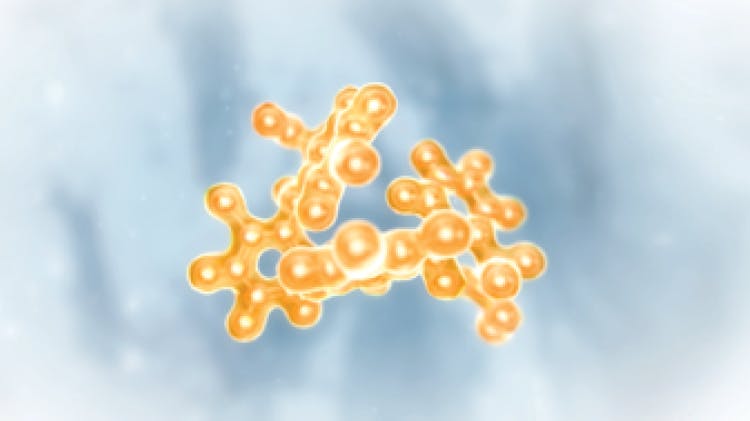Sprains and Strains: Management

Managing Sprains and Strains
It may be common for you to see patients that are experiencing symptoms of muscle sprains or strains. Often, patients are not aware of the difference between sprains and strains so before providing treatment options, it may be helpful to explain the difference.
A sprain occurs when ligaments that connect bones at a joint are stretched or torn.1 A strain, however, is when the tendons that connect muscle to bone are stretched or torn, usually common as hamstring muscle strains or back strains.1 If your patient is experiencing either of these, then they’re going to want to know treatment options almost immediately. Below, we discuss in more detail the common causes and symptoms one can experience with muscle sprains and strains, as well as treatment options that can help alleviate the pain.
How to Treat Muscle Sprains and Strains
Your patient may be experiencing a number of symptoms from their sprain or strain. For example, there may be swelling or bruising around the strained ligament, as well as an inability to move the impacted joint.2 If a patient calls to say that they can’t move or put any weight on an impacted joint or are experiencing numbness, then you should recommend they come in for a visit.2

One of the most effective and immediate ways a patient can help treat a muscle sprain or strain is by following the R.I.C.E. method:
- Rest – encourage the patient to stay away from extreme forms of exercise and movement, especially activity that causes pain, swelling, or discomfort.3
- Ice – apply ice to the affected area as soon as possible, keeping the ice on for 15 to 20 minutes, repeating this every two to three hours.3
- Compression – place an elastic bandage around the affected area to help prevent further swelling, but avoid wrapping it too tightly or it could cut off circulation.3
- Elevation – raise the injured area above the waist to help prevent further swelling, especially while sleeping.3
Another treatment option for your patient is instructing them to take an over-the-counter pain medication such as ibuprofen or acetaminophen, which can help alleviate pain temporarily until they’re feeling back to normal.3
Additionally, running a few physical exams like an X-ray or magnetic resonance imaging (MRI) could help you determine whether the strain or sprain is severe enough to require further treatment like physical therapy. A physical therapist can help the injured patient gain more stability and strength of the injured joint or limb with various stretching and strengthening exercises.
Nonpharmacologic approaches to sprains and strains
The importance of exercise for sprains and strains2,4
Aside from RICE, you may want to suggest an exercise program to patients that specifically works the particular areas of injury.
This can aid in preventing stiffness, improving range of motion, and restoring the joint’s normal, natural strength, and flexibility.
As the injury improves, the more demanding the course of exercise should become to regain normal function.
A multifaceted approach to sprains and strains
A multifaceted strategy is helpful2,4
Given the nature of pain from sprains and strains, it stands to reason that both a physical approach—using RICE and rehabilitation exercises—as well as recommending OTC pain killers to patients is important for a well-rounded recovery with minimal pain and a maximum recuperation of normal joint function.
It’s important that if your patient is seeking immediate assistance due to a sprain or strain, you try to get them in as soon as possible, as their pain could get more severe. You may be able to recommend at-home treatments (i.e. the R.I.C.E. method) for patients and then have them check in about their pain after a few days. However, if the patient is in extreme pain, then it may be worth the time and effort to perform a few tests on the affected area to see if there’s been more damage done to the joint or muscle. For more information about pain relief, check out resources on causes of pain, statistics and facts, and more.

